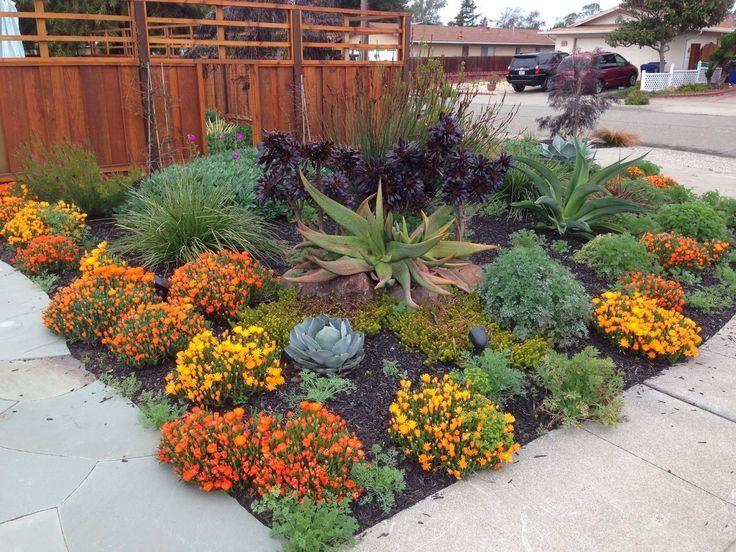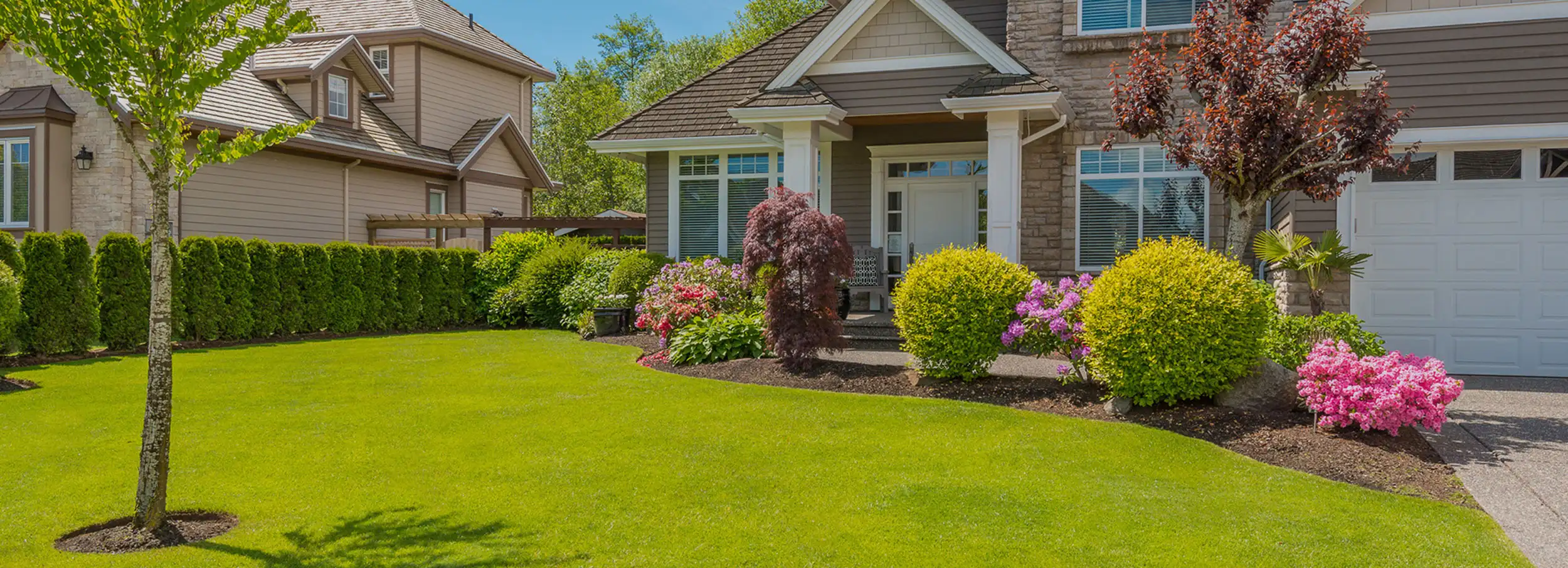Elevate Your Building's Visual With Sustainable Landscaping Styles and Eco-Friendly Practices

Advantages of Lasting Landscape Design
Carrying out lasting landscape design techniques not only saves all-natural sources but likewise promotes biodiversity and improves general environmental wellness. One considerable benefit is the reduction of water consumption through the use of drought-resistant plants, rainfall gardens, and efficient irrigation systems.
Moreover, sustainable landscaping can enhance dirt health and wellness by reducing the usage of chemical plant foods and chemicals, consequently creating a much healthier environment for plant development and useful dirt organisms. This, subsequently, improves the overall durability of the landscape to withstand ecological stressors and environment adjustment effects - landscaping company Jacksonville. In addition, sustainable landscape design methods can attract varied wild animals, including pollinators like and butterflies, cultivating a much more vivid and balanced ecosystem within the property
Incorporating Indigenous Plants
To build upon the benefits of sustainable landscaping, a strategic focus on incorporating native plants can additionally boost ecological resilience and promote biodiversity within the landscape. Indigenous plants are species that naturally happen in a specific location and have evolved to grow in the local environment, dirt conditions, and environment. By consisting of native plants in landscape design styles, home proprietors can lower water usage, lessen the need for chemical pesticides and plant foods, and sustain the local wildlife population.
Including native plants also assists in protecting the one-of-a-kind character and identity of an area's plants. These plants often need much less upkeep when established, making them a economical and sustainable landscape design remedy in the lengthy run. Furthermore, native plants can attract indigenous pollinators like and butterflies, adding to the general health and wellness of the environment.
When picking indigenous plants for landscape design projects, it is necessary to select species that are well-suited to the specific ecological conditions of the website. Consulting with organic gardens or regional nurseries can supply valuable advice on choosing the appropriate native plants for a certain area. By incorporating native plants into landscape design styles, residential property owners can develop stunning, lasting outdoor areas that profit both the atmosphere and the area.

Water Preservation Strategies
Reliable watering techniques play an important function in sustainable landscaping practices, ensuring optimal water conservation initiatives in outside spaces. Implementing techniques such as drip irrigation, rain harvesting, and clever watering systems can substantially decrease water waste while maintaining a healthy landscape. Leak irrigation supplies water straight to the origins of plants, decreasing evaporation and overflow. Rain gathering entails collecting rainwater from roof coverings and saving it for later usage in irrigation, minimizing the dependence on municipal water sources. Smart irrigation systems utilize weather condition information and dirt moisture levels to adjust watering routines, stopping overwatering and promoting water effectiveness.
Along with advanced watering techniques, xeriscaping is one more water-saving landscaping method that concentrates on utilizing drought-resistant plants, compost, and reliable irrigation to produce a low-water landscape layout - landscaping companies Jacksonville. By selecting indigenous plants that are well-suited to the regional environment and dirt problems, property owners can this post reduce the requirement for extreme watering, inevitably preserving water and promoting a sustainable outside atmosphere
Eco-Friendly Hardscaping Ideas
Enhancing outdoor areas with environment-friendly hardscaping attributes can add significantly to sustainable landscaping practices. When taking into consideration hardscaping elements, choose materials like reclaimed wood, recycled concrete, or natural stone to decrease ecological influence. These products not just include a distinct aesthetic appeal to your outdoor space but additionally lower the demand for brand-new sources removal.
Implementing permeable leading alternatives such as crushed rock or permeable concrete can help in reducing water overflow and promote groundwater recharge. These alternatives permit rain to leak right into the ground, stopping disintegration and decreasing the concern on stormwater systems.
Integrating native plants right into hardscaping styles can even more enhance eco-friendliness by supporting regional wildlife and lowering the requirement for excessive watering or chemical therapies. By incorporating eco-friendly wall surfaces or vertical yards, you can introduce extra plant life into city settings, improving air high quality and biodiversity.
Incorporating energy-efficient illumination, such as solar-powered LEDs, right into hardscaping designs can minimize electrical power intake and lower your residential property's carbon impact. Prioritizing environment-friendly hardscaping concepts not only improves the elegance of your outside room but also shows a commitment to ecological stewardship.
Upkeep Tips for Sustainable Landscapes

Frequently trim plants to promote healthy and balanced development and avoid overgrowth that can bring about pest problems or diseases. Use natural plant foods to nourish the soil and plants without hazardous chemicals that can leach into the atmosphere. For hardscaping aspects, such as permeable pavers or rock paths, consistently description tidy them to avoid particles buildup and preserve their capability. By staying aggressive with maintenance tasks, you can maintain the charm and sustainability of your landscape for years to come.
Verdict
In final thought, lasting landscaping i loved this techniques provide various advantages for homeowner, from boosting the visual appeal of the surroundings to promoting environmental preservation. By including indigenous plants, implementing water preservation strategies, and making use of environmentally friendly hardscaping ideas, homeowner can create stunning landscapes that are likewise ecologically accountable. With correct upkeep, lasting landscapes can prosper and contribute to a much healthier ecosystem for both people and wild animals.
In addition, lasting landscaping can enhance dirt health and wellness by decreasing the usage of chemical fertilizers and chemicals, thereby producing a much healthier setting for plant growth and useful dirt microorganisms.To build upon the benefits of sustainable landscaping, a critical focus on incorporating indigenous plants can better boost ecological resilience and advertise biodiversity within the landscape. By consisting of indigenous plants in landscape design designs, property owners can lower water use, decrease the demand for chemical pesticides and plant foods, and sustain the local wildlife population.
These plants frequently require less maintenance once developed, making them a sustainable and affordable landscaping service in the long run. By integrating indigenous plants into landscape design styles, building proprietors can produce attractive, lasting outdoor spaces that benefit both the neighborhood and the atmosphere.
Comments on “Reliable Lawn Cleanup Jacksonville: Maintain a Clean and Healthy Lawn”